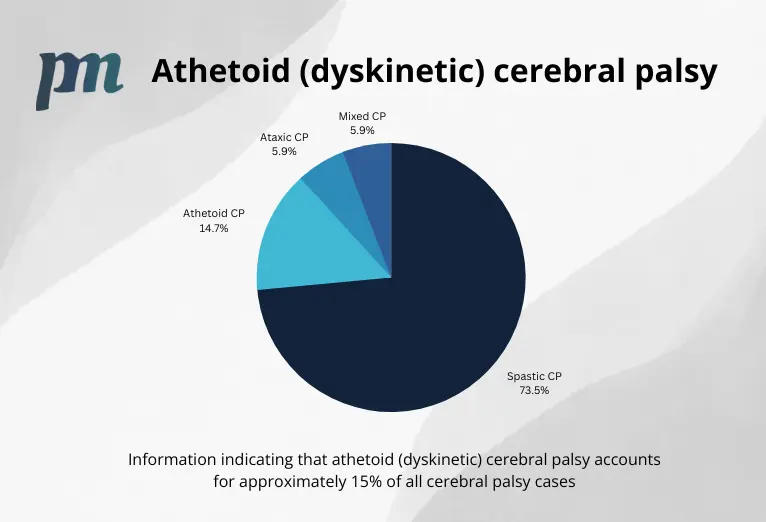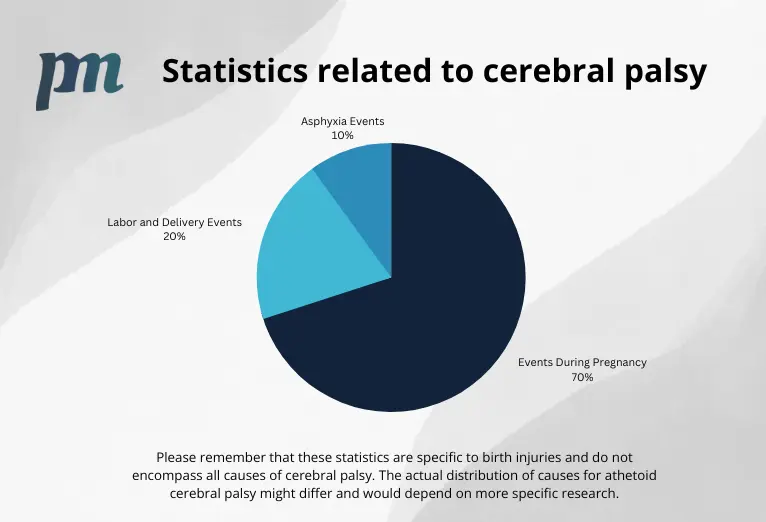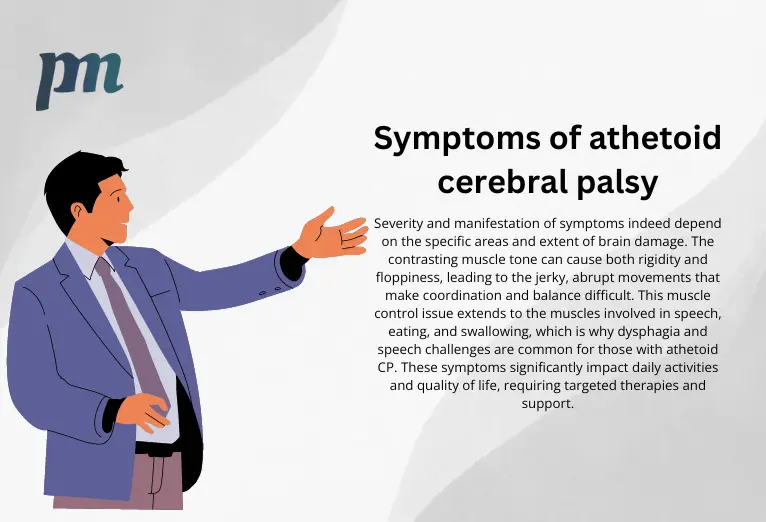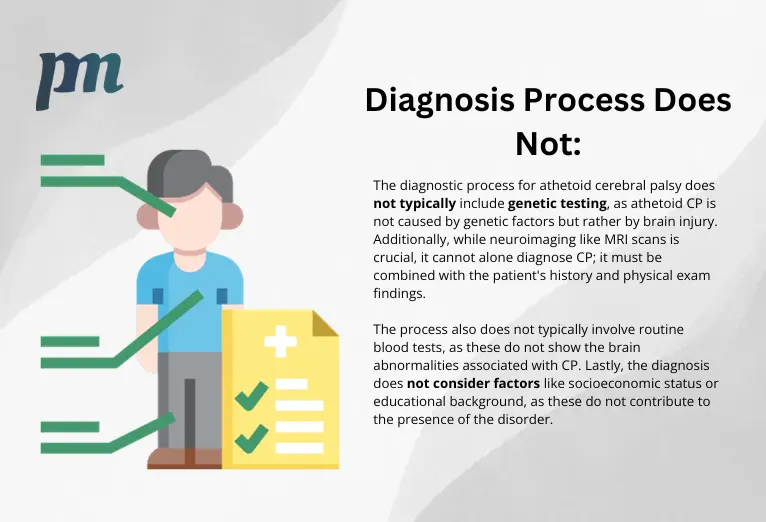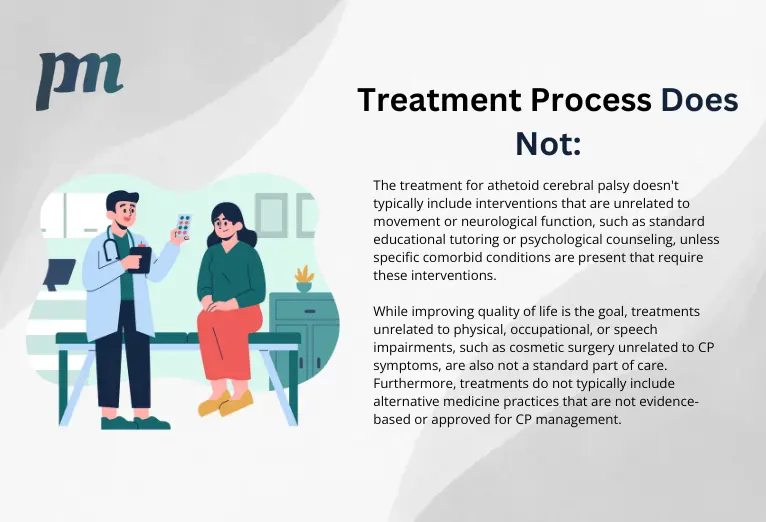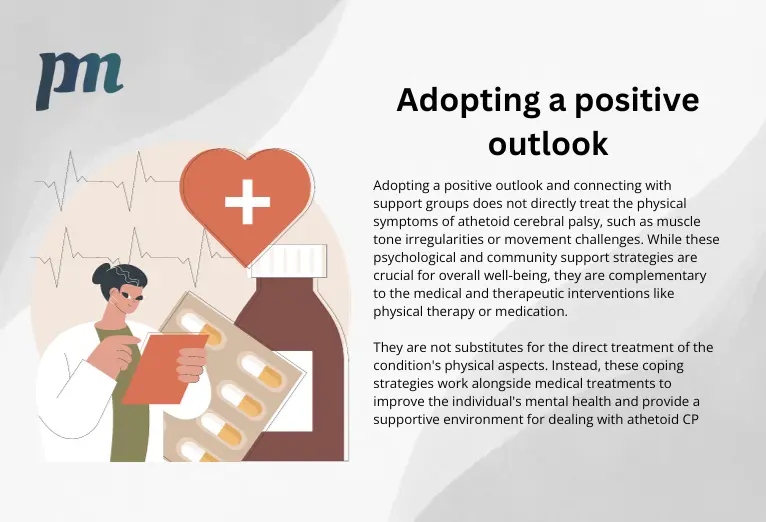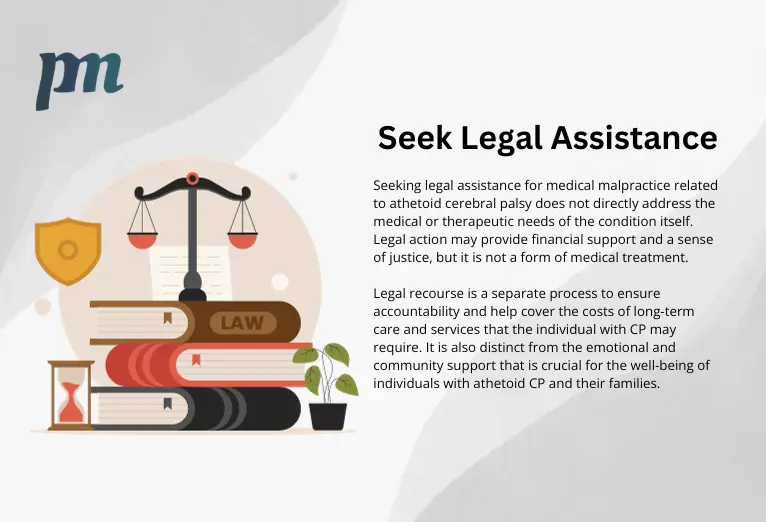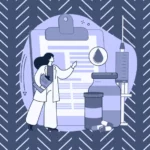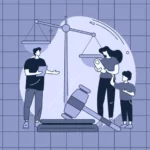Call: (800) 382-3176 or Chat with us
Understanding Athetoid Cerebral Palsy: Symptoms, Treatment, and Medical Malpractice
Cerebral palsy (CP) is a neurological disorder that affects a person’s ability to move and maintain balance. Athetoid cerebral palsy, a subtype of dyskinetic cerebral palsy, manifests through involuntary movements and abnormal postures, making daily activities challenging. But what if there were ways to better understand this condition, manage its symptoms, and improve the quality of life for those affected? In this blog post, we will delve deep into the world of athetoid cerebral palsy, exploring its causes, symptoms, diagnostic process, and treatment options, as well as discussing coping strategies and support for patients and their families and related CP.
Blog Summary
- Athetoid cerebral palsy is a form of brain damage causing abnormal involuntary movements and long-term complications.
- Diagnosis involves medical history review, physical examination and MRI scan.
- Treatment options include therapies, medications, surgeries as well as legal assistance for cases of medical malpractice.
Defining Athetoid Cerebral Palsy
Athetoid cerebral palsy, unlike spastic cerebral palsy, is characterized by abnormal, involuntary movements due to damage to the developing brain. This form of cerebral palsy makes up about 12-14% of all cases and can be further divided into dystonic cerebral palsy and choreoathetoid subtypes. Early diagnosis of dyskinetic cerebral palsy may lead to better functional outcomes and reduced caregiver burden, hence, it’s vital that clinicians possess thorough knowledge about this condition.
Individuals with athetoid CP may experience a range of complications, including:
- Intellectual disability
- Epilepsy
- Speech and hearing difficulties
- Orthopedic disorders
- Sleep disturbances
The support of organizations like the Cerebral Palsy Alliance can help manage these complications and improve the lives of patients and their families.
Involuntary Movements in Athetoid CP
Involuntary movements in athetoid CP include:
- Dystonia: recurring, sluggish movements and prolonged postures. The extent of dystonia may vary, with some children experiencing generalized dystonia affecting the entire body, while others may have focal dystonia, limited to specific areas like the legs.
- Athetosis: slow, writhing movements that are continuous and flowing.
- Chorea: brief, irregular, and jerky movements.
Each type of movement has its distinct characteristics.
Athetosis is characterized by slow, continuous, writhing movements, making it difficult for the individual to maintain posture or hold onto objects. Chorea, on the other hand, involves brief and irregular motions, ranging from mild fidgeting to wild thrashing. These involuntary movements severely impact the patient’s ability to perform daily activities, therefore, early intervention and relevant treatment become indispensable.
Basal Ganglia’s Role
The basal ganglia, a group of nuclei located deep within the brain, play a crucial role in controlling voluntary movements. Damage to this area results in the involuntary movements seen in athetoid CP. When the basal ganglia are injured, it interferes with the regular control of voluntary movements, leading to involuntary and uncontrollable movements.
Healthcare professionals must comprehend the function of the basal ganglia in athetoid CP development to devise productive treatment plans, such as deep brain stimulation, thereby enhancing patient’s life quality.
Risk Factors and Causes
Several risk factors and causes have been identified for athetoid cerebral palsy, including:
- Brain injury
- Damage to the basal ganglia and cerebellum
- Premature birth
- Infantile jaundice
- Placenta blood clotting
Damage to the basal ganglia and cerebellum can affect the developing brain, leading to the involuntary muscle movements and abnormal postures seen in athetoid CP.
Premature birth is another major risk factor, while untreated jaundice can also lead to injury to the basal ganglia, causing dyskinetic cerebral palsy. Comprehending these risk factors and causes can assist in proactive diagnosis and intervention, thus facilitating superior condition management.
Symptoms and Clinical Presentation
Symptoms of athetoid cerebral palsy can vary based on the severity and location of the brain injury. Common symptoms include:
- High and low muscle tone
- Stiffness
- Jerky movement
- Floppiness in the muscles
These involuntary movements, which can include abrupt movements, are a type of involuntary movement that makes it challenging for individuals to maintain balance and perform daily activities.
Furthermore, individuals with athetoid CP often face difficulties with speech, eating, and swallowing. Dysphagia, or difficulty swallowing, can make eating a challenge and may even lead to weight loss. Speech may also be affected, resulting in difficulties in articulation and communication.
Diagnosis Process
The cerebral palsy diagnosis process for athetoid cerebral palsy begins with a thorough review of the patient’s medical history, followed by a physical examination. The physical examination includes a formal neurologic examination, evaluation of motor skills, muscle tone, reflexes, and posture. This comprehensive assessment helps healthcare professionals identify any irregularities in movement or muscle tone that may indicate athetoid CP.
Neuroimaging techniques like MRI scans are instrumental in affirming an athetoid CP diagnosis. MRI scans provide detailed images of the brain, allowing physicians to detect abnormalities in the putamen of the basal ganglia, thalamus, and periventricular white matter. These findings help assess the extent of brain damage and provide valuable insights into the underlying brain lesions.
Treatment Options for Athetoid Cerebral Palsy
Treatment options for athetoid cerebral palsy may include:
- Physical therapy
- Occupational therapy
- Speech therapy
- Medication
- Surgery
These treatments focus on improving symptoms and enhancing the quality of life for the patient.
Each treatment option aims to address specific challenges faced by the individual, allowing for a comprehensive approach to managing the condition.
Physical Therapy
Physical therapy for athetoid CP centers on strength training, resistance bands, and exercises to improve overall mobility, muscle strength, and sensory impairments. Regular physical therapy sessions can help enhance motor skills and muscle tone, providing individuals with increased independence and autonomy.
Resistance bands are commonly used in physical therapy to aid in strength training exercises, which in turn can increase muscle tone, improve posture, and enhance walking abilities. Through targeted exercises and techniques, physical therapists help patients build strength and coordination, leading to improved daily functioning.
Occupational Therapy
Occupational therapy assists children with athetoid CP in learning to perform daily tasks more independently. Through stretching exercises, resistive equipment, and playful activities, occupational therapists help improve the child’s strength, coordination, and fine motor skills.
Adaptive tasks, games, and repetitive exercises are utilized to develop and reinforce new skills, reduce spasticity, and increase the likelihood of future independence. Occupational therapy plays a pivotal role in aiding individuals with athetoid CP to surmount daily life challenges.
Speech Therapy
Speech therapy addresses speaking, eating, and breathing challenges in patients with athetoid CP. By focusing on the key muscles involved in forming words, producing sounds, and controlling breath, speech therapists help patients cultivate greater control and coordination of these muscles, resulting in improved speech and communication capabilities.
Speech therapists also work with children who have difficulties with swallowing and digestion, which are common challenges for those with cerebral palsy. Targeted exercises and techniques in speech therapy can assist individuals with athetoid CP to surmount these hurdles, fostering a greater sense of independence.
Coping Strategies and Support
Adopting a positive outlook, pursuing suitable treatment and continuous care, and establishing connections with support groups and resources serve as vital coping strategies for individuals with athetoid cerebral palsy and their kin. A positive mindset can boost independence, confidence, and enthusiasm, improving overall well-being and the ability to manage challenges.
Organizations like the Cerebral Palsy Alliance provide invaluable support, education, and advocacy for patients and families affected by athetoid CP. Connecting with others who share similar experiences can offer a sense of community, understanding, and emotional support, empowering individuals to navigate the complexities of their condition.
Medical Malpractice and Athetoid Cerebral Palsy
Medical malpractice and athetoid cerebral palsy cases may arise due to birth injuries or negligence. In such situations, seeking legal assistance from experienced law firms like Percy Martinez Law can help families obtain financial compensation and justice. Medical malpractice leading to dyskinetic cerebral palsy may involve birth injuries, oxygen deprivation, or other preventable causes.
If your child is diagnosed with athetoid cerebral palsy due to medical malpractice, seeking legal assistance from an experienced law firm is imperative to secure deserved compensation and hold the liable parties accountable.
Summary
Understanding athetoid cerebral palsy is crucial for patients, families, and healthcare professionals alike. From recognizing the symptoms and risk factors to navigating the diagnosis process, treatment options, and coping strategies, being well-informed about the condition can lead to improved quality of life and better management of the disorder.
By seeking appropriate treatment, support, and resources, individuals with athetoid cerebral palsy can overcome the challenges they face and lead more independent, fulfilling lives. Let us continue to raise awareness, advocate for those affected, and strive for a world where every individual with cerebral palsy has the opportunity to thrive.
Frequently Asked Questions
What are the symptoms of athetoid cerebral palsy?
Symptoms of athetoid cerebral palsy include involuntary movements, tremors, poor posture, unsteadiness, twisting of the torso, slow writhing movements, abrupt movements, grimacing and drooling.
What does athetoid cerebral palsy cause?
Athetoid cerebral palsy (ACP) is a neurological condition that is present at birth and causes involuntary muscle movements and difficulty controlling voluntary movement in the hands, arms, feet and legs. It is characterized by a combination of high and low muscle tone, making it difficult to walk or grasp objects.
What is a athetoid movement?
Athetoid movement is a type of involuntary, writhing movement typically affecting the limbs, face, neck, tongue and fingers, characterized by slow, irregular and continuous muscular contractions.
What is an example of athetoid?
Athetoid Cerebral Palsy includes Dystonia, Chorea and Athetosis, examples of which include slow rotational movement of the torso, sudden involuntary movements and slow writhing movements respectively.
What is the difference between dystonic and dyskinetic cerebral palsy?
Dystonic cerebral palsy causes uncontrollable movement and muscle contractions, which can interfere with the child’s sleep and make it difficult for them to sit or lie down. Dyskinetic cerebral palsy is a broader condition, which includes dystonia.

